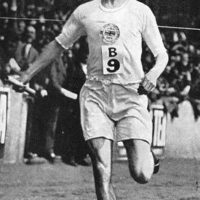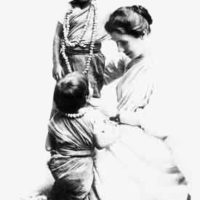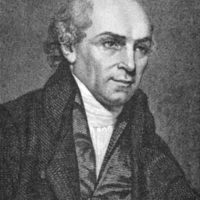Early Life of Don Richardson
Don Richardson was born in Canada in 1935. After graduating high school, Don went to Prairie Bible School in Alberta, Canada. There he met his future wife, Carol. Dating, however, was highly discouraged at the Bible School. One thing that caught Don’s eyes concerning Carol, was her commitment to love Jesus above everything else and to world missions. After graduating from Bible School, Don went on to Summer Institute of Linguistics (SIL) while Carol studied to be a registered nurse. During this time, Don and Carol kept in contact until they got married. Both of them made a commitment to become missionaries.
The Sawi Tribe
The Sawi tribe of Irian Jaya, Indonesia was known for their treachery and deceit. They would befriend tribesmen of surrounding tribesmen. They would give food to the member of the tribe and invite them to feast in order to gain their trust. When their trust had been gained, the people of the tribe would kill the visitor. They then would eat the meat of the person they had attacked.
This was the tribe the Richardson’s went to be missionaries with. They knew of the great risk they were taking to reach this tribe, but they knew it would be worth it in order to reach them with the Gospel.
Judas, Their Hero
Ministry among the Sawi tribe was tough. With the help of a Sawi teacher, he learned to speak the language of the Sawi tribe. In turn, he taught the Sawi tribe how to use tools such as axes. Carol provided clinics to take care of the ill in the Sawi tribe.
As soon as Don could speak the language fluently, he tried to explain the Gospel. The tribe listened politely. Yet, the people did not see Jesus as the hero, but rather, Judas because of his betrayal of Jesus. This shocked Don. With the mentality of the Sawi tribe, how could he share the Gospel with them? The answer would be a surprise to Don.
Battle
The Sawi people were split up into different groups. The particular group the Richardson’s were staying with went to battle against a surrounding tribe. The battle lasted for months. The Richardson’s helped the wounded with medical work. After months of the battle and no converts, the Richardson’s were at the end of themselves. Up to that point, they had been relying on their education. They were at the point, where they had to rely on God. The Richardson’s made an ultimatum. Either the two Sawi tribes had to stop their fighting among themselves or they would leave. The Sawi tribe wanted the Richardson’s to stay, because of the tools they had brought along with the medicine.
Peace
The two tribes met together in order to undergo the peace child ceremony. The peace child ceremony was where people from different tribes met together, and the chiefs exchanged their only son. This was the only case in which the tribes would not undergo any treachery. As long as the children were living, the tribes would be at peace.
Redemptive Analogy
Don used this analogy to spread the Gospel. He said Jesus was the ultimate peace child. As long as Jesus lives, there will be peace. From this, Don came up with the mission theory of a redemptive analogy. He argued that every culture has an analogy which God set in place in order to draw them to himself when the time came.
Conversions
From this, an unprecedented number of Sawi people came to know Jesus. As the number of conversions grew, a church was built. Don translated the New Testament into Sawuy.
Help continued to come in through other missionaries. They would bring in medical supplies and other materials (such as tools) to help the new Christians.
Legacy
Through the witness of the Sawi, five of the surrounding tribes came to Jesus.
Without all of the murders and diseases, the longevity of life went up. When Don and his son, Paul, went to the tribe 50 years later, there were still people alive from when Don was a missionary there. Some of them were in their 70s.
The enmities between tribes were broken down. No longer were the Sawi people treacherous. Instead, people from different tribes met under the same church without fear of betrayal.
The younger generations had a desire to progress and to take leadership roles in the church. They did not want to go back to the old ways of doing things before the missionaries came but instead wanted to continue in the faith their fathers had taught them.
The concept of redemptive analogy has been used around the world for missionaries to reach other people with the Gospel. For example, with the Karen people in Burma, there was a legend that a black book had been lost, and that a white man would come and deliver it. When a missionary came and translated the Bible into their language, their legend opened the way for him to share the Good News and many people converted because of his ministry.





Don Richardson’s missionary work has inspired me take a stand for the Gospel to be spread worldwide.